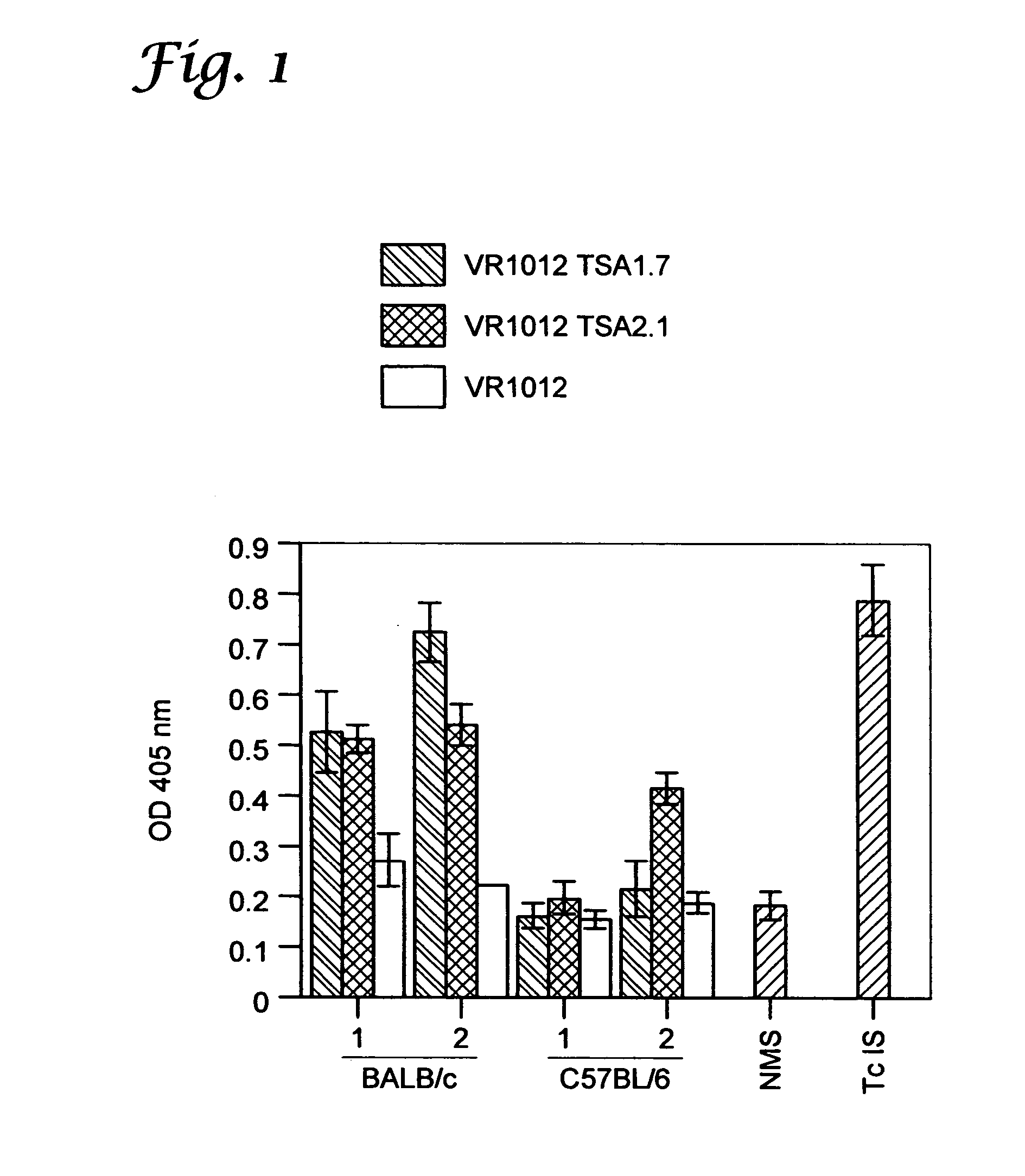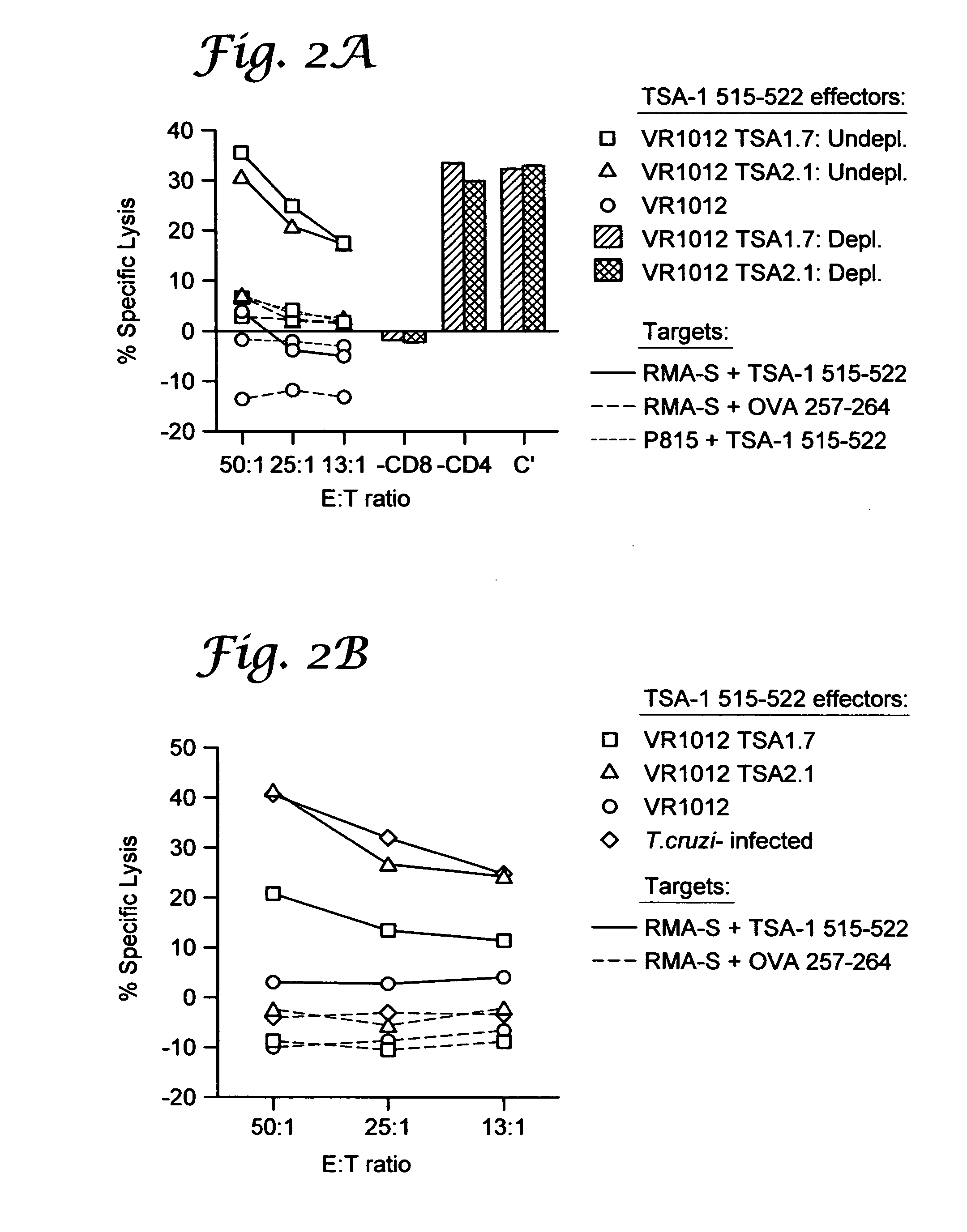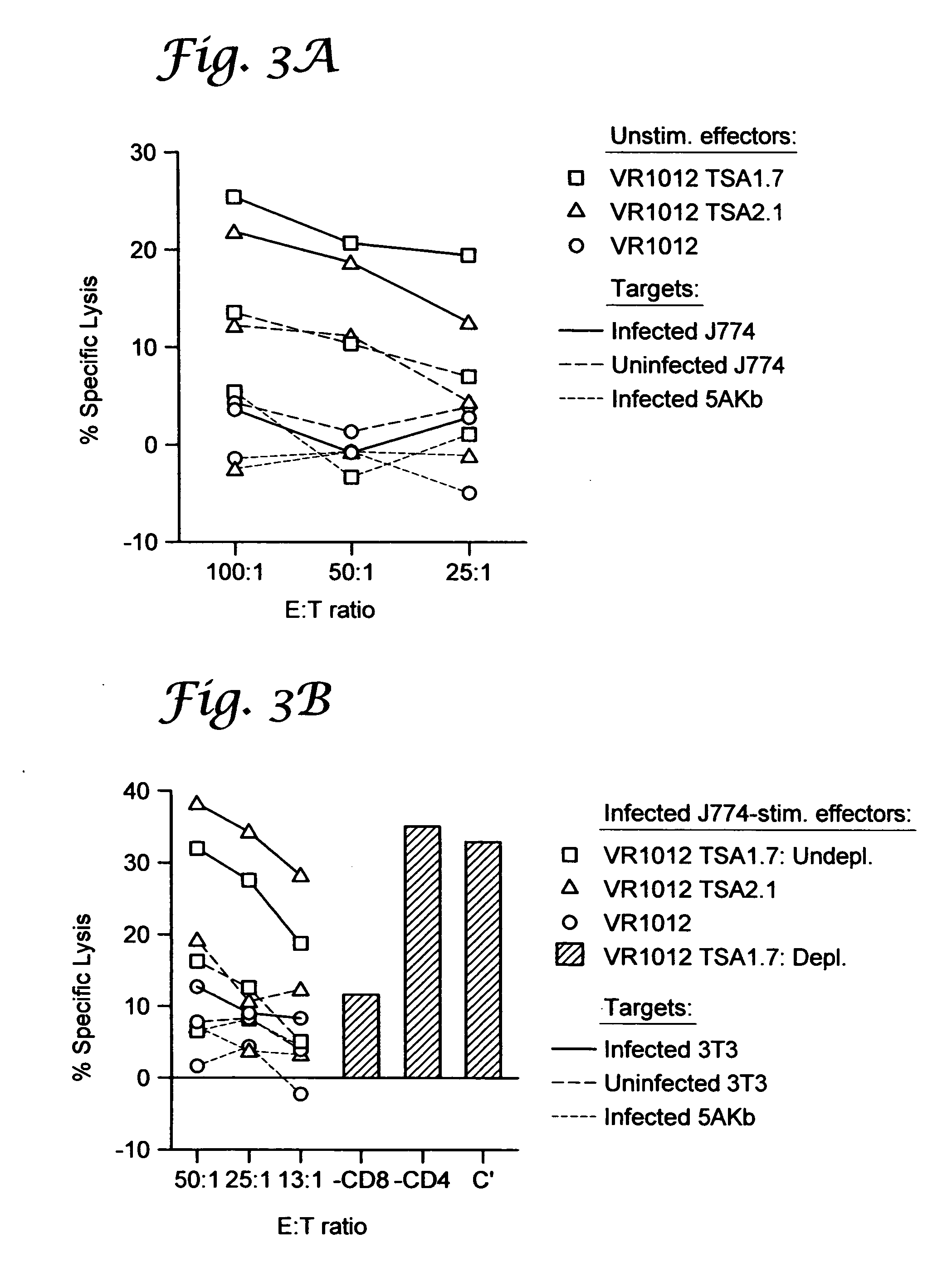Prophylactic and therapeutic immunization against protozoan infection and disease
a technology of protozoa infection and immunization, applied in the direction of antiparasitic agents, drug compositions, anti-infectious agents, etc., can solve the problems of limiting the utility of chemotherapy for acute and chronic patients, drug therapy reduces the severity of disease in chronically infected individuals, and prevents the death of the mammal. , the effect of preventing the progression of diseas
- Summary
- Abstract
- Description
- Claims
- Application Information
AI Technical Summary
Benefits of technology
Problems solved by technology
Method used
Image
Examples
examples
[0077] The present invention is illustrated by the following examples. It is to be understood that the particular examples, materials, amounts, and procedures are to be interpreted broadly in accordance with the scope and spirit of the invention as set forth herein.
example i
Vaccination with Trypomastigote Surface Antigen-1-Encoding Plasmid DNA Confers Protection Against Lethal Trypanosoma cruzi Infection
[0078] Mice and parasites. Six- to 8-wk-old female C57BL / 6J (B6) and BALB / cByJ (BALB / c) mice (breeding pairs obtained from The Jackson Laboratory (Bar Harbor, Me.) were used in all experiments. The Brazil strain of T. cruzi was maintained in vivo by serial biweekly passage of 103 blood-form trypomastigotes (BFT) in C3H / HeSnJ mice and by continuous in vitro passages of tissue culture-derived trypomastigotes (TCT) in monolayers of Vero cells. B6 mice were infected intraperitoneally with 103 BFT and challenged 3 months later challenged with 105 TCT by subcutaneous injection at the base of the tail.
[0079] Cell lines and culture reagents. P815 (H-2d; mastocytoma cells; ATCC TIB 64), J774 (H-2d, macrophages, ATCC TIB 67), 3T3 (H-2d, fibroblasts, ATCC CCL 163), Vero (African Green monkey kidney cells, ATCC CCL 81) (all from American Type Culture Collection [...
example ii
Genetic Immunization Elicits Antigen-Specific Protective Immune Responses and Decreases Disease Severity in Trypanosoma Cruzi Infection
[0102] Mice and parasites. Six- to 8 week old female C57BL / 6J (“B6”) (Jackson Laboratory, Bar Harbor, Me.) were used in all experiments. The Brazil strain of T. cruzi was maintained in vivo by serial biweekly passage of 103 blood-form trypomastigotes (BFT) in C3H / HeSnJ mice and by continuous in vitro passages of tissue culture-derived trypomastigotes in monolayers of Vero cells, according to standard parasitology techniques.
[0103] Cell lines and culture reagents. Vero (African Green monkey kidney cells, ATCC CCL 81, Rockville, Md.) and RMA-S cells (an immuno-selected variant of the RBL-5 lymphoma that is deficient in the expression of class I MHC molecules due to a mutation in the TAP-2 peptide transporter, a gift from Dr. M. B. Oldstone, Scripps Research Institute, La Jolla, Calif.) were maintained in complete RPMI-1640 medium (Mediatech, Herndon,...
PUM
| Property | Measurement | Unit |
|---|---|---|
| time intervals | aaaaa | aaaaa |
| volume | aaaaa | aaaaa |
| pH | aaaaa | aaaaa |
Abstract
Description
Claims
Application Information
 Login to View More
Login to View More - R&D
- Intellectual Property
- Life Sciences
- Materials
- Tech Scout
- Unparalleled Data Quality
- Higher Quality Content
- 60% Fewer Hallucinations
Browse by: Latest US Patents, China's latest patents, Technical Efficacy Thesaurus, Application Domain, Technology Topic, Popular Technical Reports.
© 2025 PatSnap. All rights reserved.Legal|Privacy policy|Modern Slavery Act Transparency Statement|Sitemap|About US| Contact US: help@patsnap.com



